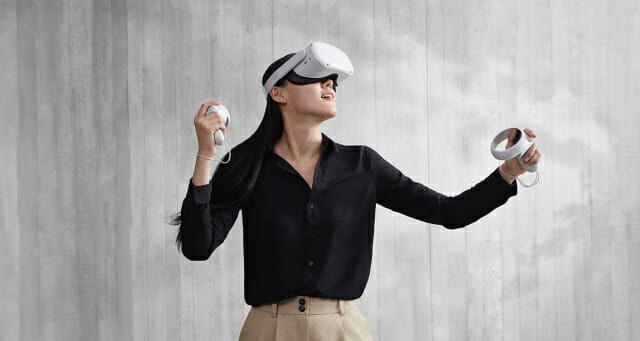
In the extended reality (XR) market, collectively referred to as virtual reality (VR) and augmented reality (AR) last year, Oculus, a subsidiary of Facebook, occupied the unrivaled first place with over half of the market share.
According to XR Model Tracker, recently released by global market research firm Counterpoint Research on the 11th, Oculus ranked first among the top 5 XR brand companies last year with 53.5% market share.
Oculus is a VR device maker that became a subsidiary of Facebook after being acquired by Facebook in 2014. Oculus’ market share has increased from 44% in 2019 to 53% last year thanks to the strong sales of’Oculus Quest 2′. Oculus Quest 2 also ranked first among the top five best-selling models last year.
Counterpoint Research said, “Oculus has released a product with improved performance, such as increased memory and battery life, improved high-definition and refresh rate, etc., at a reasonable price.” It is analyzed that the increase in the market share has also influenced the increase in market share,” he said.
It is observed that a stable supply chain and brand recognition in the game sector have also contributed to Oculus’ growth.

Sony ranked second, accounting for 11.9% of the market share based on PlayStation users. Third place was HTC (5.7%), and fourth place was DPVR (5.5%).
As the number of corporate users such as schools and educational facilities increased, sales of Chinese brands also increased.
Of the top five best-selling models last year, three were Oculus products. The product that sold the most was’Oculus Quest 2′, and both the 3rd and 4th place were Oculus products. Second place was Sony’s PlayStation VR.

Counterpoint Research predicts that as Apple and Sony actively enter the XR market, competition in the XR market will intensify in the future. In addition, Microsoft and Baryo are also paying attention to the field, and it is predicted that the XR industry can grow together based on the consumers that Microsoft currently has.
The market is expected to grow continuously over the next 10 years, and it is expected to show double-digit growth over the next five years.
“VR handsets accounted for 90% of the entire XR market,” said Peter Richardson, chief researcher at Counterpoint Research. As a result, the demand for standalone VR devices is increasing.”
Related Articles

‘Pico’, which swept the VR market in China, occupies the majority of the headset market

Verizon, Orange, and Cheonghwa joined the ‘5G content alliance’ led by LGU+

Gyeonggi-do, recruiting companies participating in VR-AR public service linkage support project

“Apple’s mixed reality headset with 15 cameras”
“VR was mainly used for individuals to play games, but in a pendemic situation, corporate demand for education and training is also increasing,” he added.
Meanwhile, last year’s XR headset shipments decreased by 9% compared to the previous year. However, the decline was smaller than expected, which was analyzed to be affected by the surge in sales of Oculus Quest 2.
